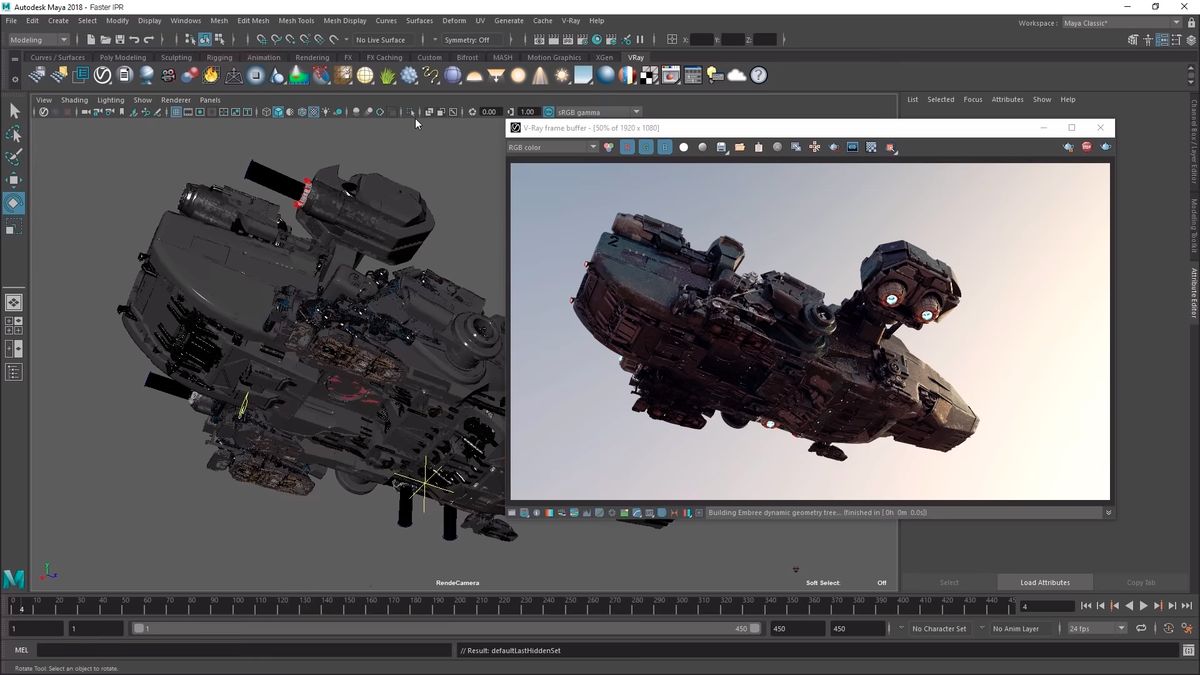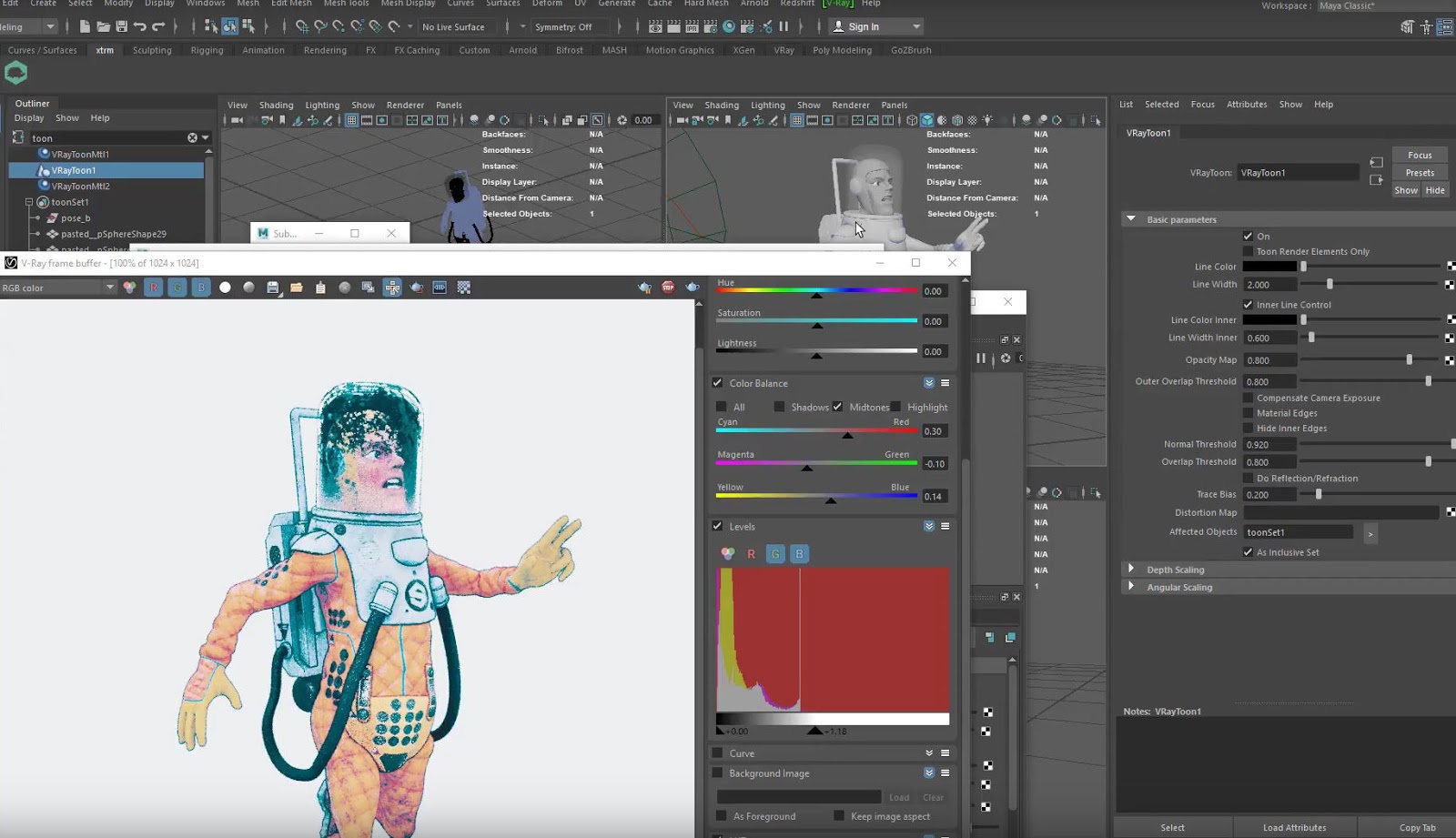
The sample scene used for this explanation is included in this document for you to test.

Also, this method can be used to tint the hair Along the strand by using the Distance Along Strands output from the VRayHairSampler.įor more information about this utility node go to Chaos Group Documentation Sample Scene Now you can use the Ramp to determine how the colors are randomized on the hair by changing the positions of the colors and adding other nodes for more interesting effects. Hit render and you should see something similar to the image below:
#Vray maya how to#
In this example we'll see how to add variation to the hair strands using this utility node.Īssign a VRayMtlHair shader to the hair (Or any other shader), create a Ramp Texture node, delete the place2dTexture node (we are not going to needed since Ornatrix is providing the UVs for the hair object) and connect it to the Overall Color input of the VRayMtlHair shader, in the Ramp Texture node select the Ramp Type/Direction, in this case VRamp, change the interpolation method to None and create some colors.Ĭreate a VRayHairSampler (Or a VRayFurSampler if you are shading fur) and connect the Random By Strand output to the V Coord input of the Ramp Texture: This will tell the Ramp Texture how the colors should be distributed in the hair, in this case the color will be randomized by strand using the Curve ID information exported by Ornatrix to VRay. The VRayHairSampler utility node allows you to add different effects top the hair based on the data exported by Ornatrix to VRay, like Curve ID, UVs hair direction and other useful data. Simply set the active renderer to V-Ray and Ornatrix hair should be detected and rendered inside the scene. No extra steps are needed to render Ornatrix hair with V-Ray. If you have an older V-Ray version installed you will not be able to render the hair natively, however, you can still render it as geometry. Ornatrix is natively supported by V-Ray for Maya as of version 3.15.01. V-Ray is a popular and widely used commercial renderer developed by Chaos Group. The groom changes when moving the vertices on the distribution surface.Clumps disappear when reloading the scene.V-Ray 3.0 for Maya is a suite of physically-based lighting, shading and rendering tools. Its extensible customization options and powerful lighting, look-development, and quick post-processing features save users time, let them go beyond just rendering, and help them explore their creative ideas without limits.
#Vray maya full#


I'm curious if you are supposed to see more than just a bounding box and if there is a specific way of rendering the vdb, currently I've only been able to render it where the voxels appear as shitty blocks. It seems to read the correct range and the bounding box animation looks correct but the documentation from chaos group on the VrayVolumeGrid is limited. Unsupported VDB file format (expected version 222 or earlier, got version 223) Occasionally, not always (which is concerning) maya is spitting out this warning: I am using the VrayVolumeGrid to load the vdb into maya, the only viewport display is the animated bounding box. We are testing out vray 3.0's vdb rendering capabilities within maya, I was curious if anyone has a working example of this?


 0 kommentar(er)
0 kommentar(er)
